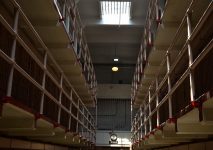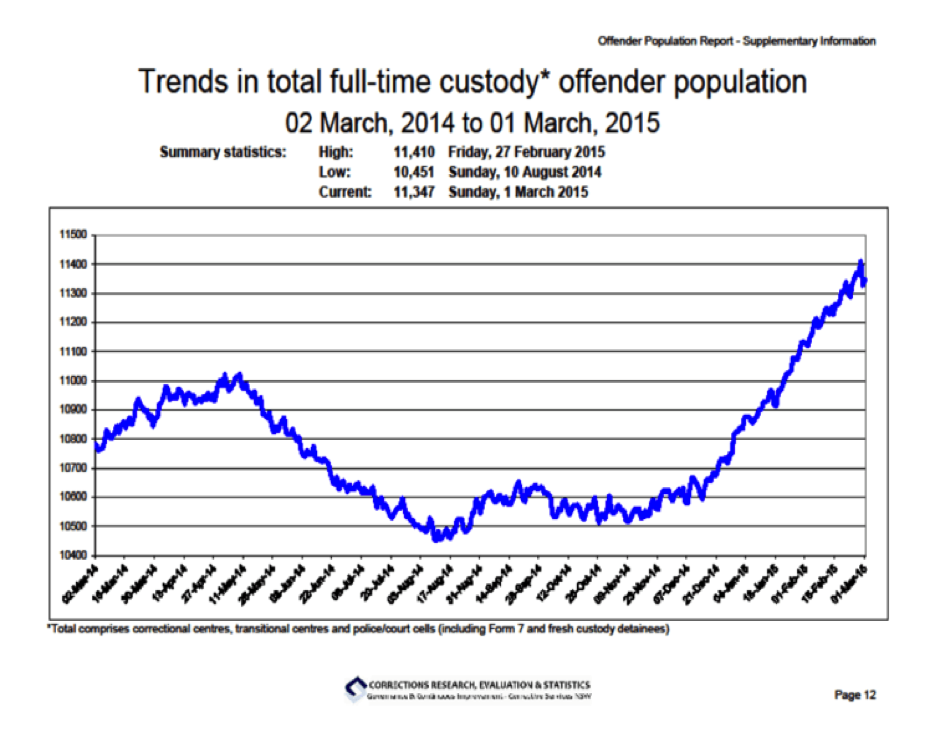Tough Bail Laws Cause Rise in Imprisonment Rates

New statistics reveal that the adult prison population in NSW grew by a staggering 9% between April 2015 and March 2016, and is now sitting at a record high of 12,390 inmates.
While overall crime rates in NSW have fallen, tough new bail laws have led to a rise in people being held behind bars while they await the determination of their court cases.
Bail Laws
The Bail Act 2013 commenced operation in May 2014, replacing the old Bail Act of 1978 which had been amended over 80 times and was widely criticised as unfair and unworkable.
The new Act was the product of broad consultation amongst community and victims’ groups, lawyers, civil liberties groups and law enforcement bodies, whose submissions were considered in a detailed report by the NSW Law Reform Commission.
It prescribed a two-step test which bail authorities – such as magistrates and judges – had to consider before deciding whether or not to grant bail.
The first step was to determine whether the applicant posed an “unacceptable risk” to the community. Bail would be granted if the applicant did not pose an unacceptable risk.
If an unacceptable risk was identified, the bail authority would then turn to the second step of the test, which was whether or not the risk could be mitigated (overcome) by the imposition of bail conditions.
However, the Act was amended in 2014 to require a person applying for bail in respect of certain offences to ‘show cause’ as to why their detention is unjustified. This made achieving bail much harder for over 900 offences.
Why the Change?
A sustained campaign of sensationalist and misleading reporting by newspaper columnists and radio shock-jocks to the effect that the new Act made it easy to achieve bail put pressure on NSW Attorney-General Greg Smith SC to change the law.
Mr Smith’s media advisor, Michael Pelly, made it clear where the impetus for change came from: “I can assure you that from 9 o clock to 12 o’clock, I’d say 80 per cent of parliamentarians had Ray Hadley on the radio and had Ray Hadley telling them for a good four months that Greg Smith is soft on crime, was a raving lunatic, that Barry [O’Farrell] should sack him,” Pelly said.
When Mike Baird took over as Premier, he quickly announced that “the Attorney General and I have become concerned that some recent bail decisions do not reflect the government’s intention to put community safety front and centre”. Former Attorney General John Hatzistergos (now a Local Court Magistrate) was then given the task of making it harder to achieve bail.
The amendments were passed shortly thereafter.
Effect of the Amendments
As a result of the changes, the number of people on remand (in custody awaiting trial) increased by 800 between December 2014 and March 2015.
The Director of the Bureau of Crime Statistics and Research (BOCSAR), Dr Don Weatherburn, primarily attributed the sharp increase to the amendments. “Since more than half of all remand prisoners end up receiving a prison sentence, the rise in the bail refusal rate is one of the factors putting upward pressure on the NSW prison population,” he said.
Effect on Prison System
The increase has, in turn, increased the pressure on prison resources; resulting in inmates being turned away from rehabilitation programs such as mental health support and drug and alcohol programs. Overcrowding has added to tension to the prison environment, which has made it more difficult for prison staff to effectively manage and control the prison population.
The Department of Corrective Services is now preparing to cram another 742 inmates into the prison system. NSW prison authorities are even considering laying mattresses on the floor at one facility, while portable prison cells are being built at others.
Labor’s corrections spokesman, Guy Zangari, believes the inability of the system to accommodate for inmates is a “recipe for disaster”, as more and more are jammed into cells. “Violence is already escalating inside prison walls due to overcrowding,” he said.
Effect on Reoffending
Premier Mike Baird made it a key goal of his first term in office to reduce reoffending rates in NSW by 5%. But given that incarceration tends to increase the prospects of future offending, the current situation has likely decreased the chances of that occurring.
NSW currently has the highest reoffending rates in Australia – around 48 per cent of inmates who leave prison are back within two years. There are concerns the percentage will continue to rise as more people are put behind bars.
NSW Corrections Minister, David Elliot, says prisons that fail to reduce reoffending rates are at risk of being taken over by private operators. He describes privatisation euphemistically as “market testing”.
The concern, however, is that private prison companies do not have a vested interest in rehabilitating inmates – they make more money when higher numbers of people are sent to prison, stay longer in prison, and return to prison after release.
Indeed, the NSW government’s current approach of sending more people to prison for longer – whether through tougher bail laws, higher maximum penalties or mandatory sentencing regimes – and its signaled intention to move towards privatisation is likely to lead to higher reoffending rates, which is against the community’s social and economic interests.







